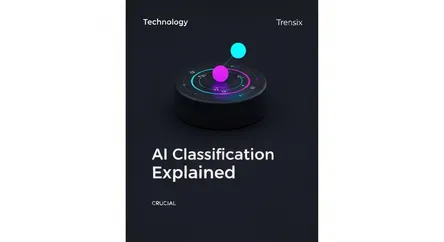Technology
AI Classification Explained

Discover AI classification, a key machine learning task that sorts data into predefined categories. Learn how it powers spam filters and medical diagnoses.
What is it?
Classification is a fundamental task in supervised machine learning where an algorithm learns to assign a predefined category or class label to new data. The process involves training a model on a dataset where each data point is already correctly labeled (e.g., emails marked as 'spam' or 'not spam'). The model learns the underlying patterns from this training data. Once trained, it can accurately predict the category for new, unseen data points. Common applications include identifying objects in images, diagnosing medical conditions, or determining the sentiment of a text review.
Why is it trending?
The explosion of data and advancements in computing power have made classification indispensable. Businesses leverage it for customer segmentation, fraud detection, and sentiment analysis to gain a competitive edge. Its popularity is also fueled by the accessibility of machine learning frameworks like TensorFlow and Scikit-learn. These tools have democratized AI, enabling more developers and data scientists to build and deploy powerful classification models. This has led to widespread adoption and innovation across industries, from finance to e-commerce, driving efficiency and smarter decision-making.
How does it affect people?
Classification technology is woven into our daily digital experiences. It powers the spam filters in our email, the recommendation systems on streaming services, and the content moderation on social media. In finance, it's used for credit scoring and loan approvals. Critically, in healthcare, it assists in diagnosing diseases from medical images, leading to earlier and more accurate treatments. In autonomous vehicles, it helps identify pedestrians and other obstacles, directly enhancing safety. This technology works behind the scenes to personalize services, protect us from harm, and improve overall convenience.